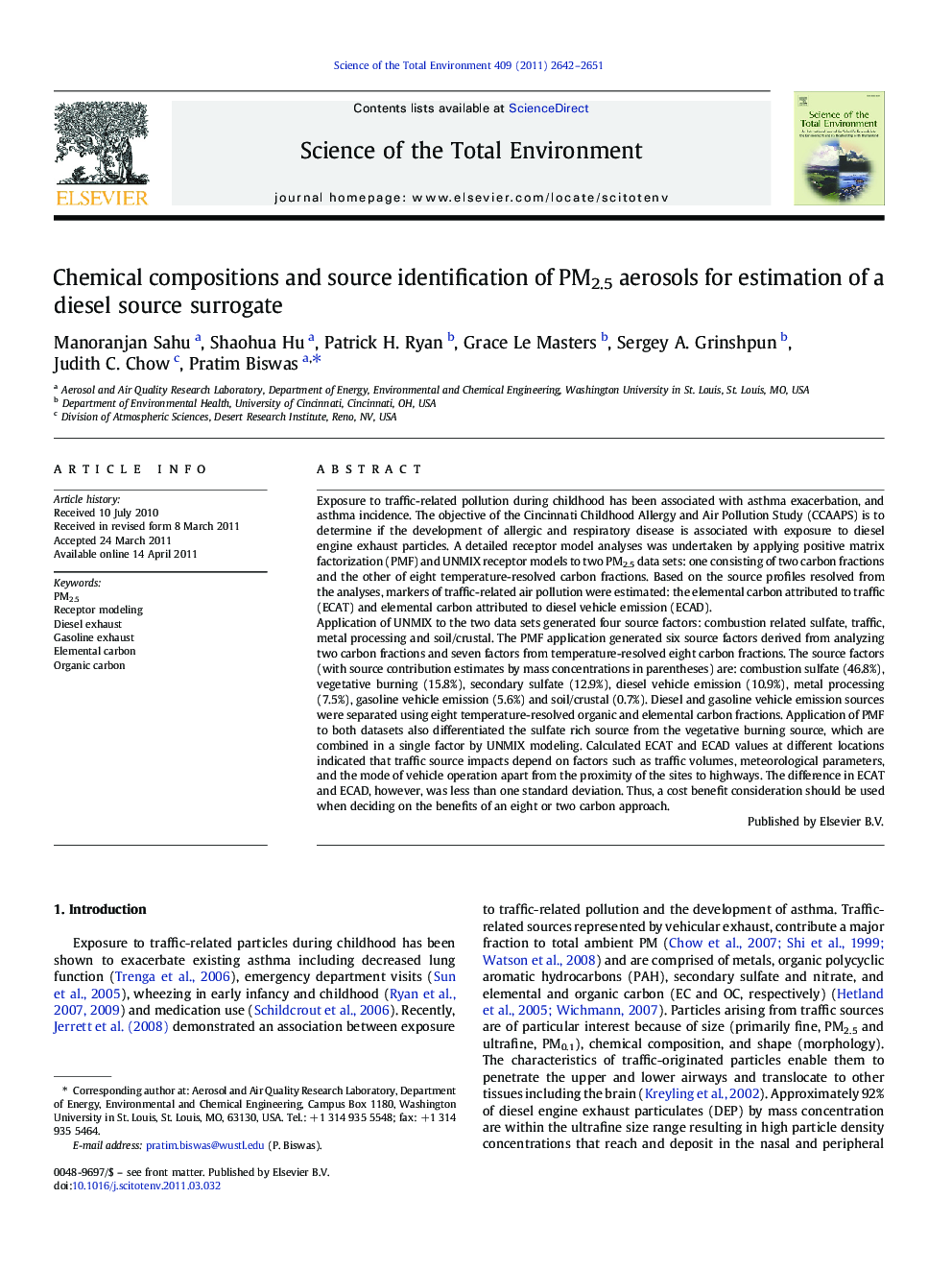| کد مقاله | کد نشریه | سال انتشار | مقاله انگلیسی | نسخه تمام متن |
|---|---|---|---|---|
| 4430149 | 1619849 | 2011 | 10 صفحه PDF | دانلود رایگان |

Exposure to traffic-related pollution during childhood has been associated with asthma exacerbation, and asthma incidence. The objective of the Cincinnati Childhood Allergy and Air Pollution Study (CCAAPS) is to determine if the development of allergic and respiratory disease is associated with exposure to diesel engine exhaust particles. A detailed receptor model analyses was undertaken by applying positive matrix factorization (PMF) and UNMIX receptor models to two PM2.5 data sets: one consisting of two carbon fractions and the other of eight temperature-resolved carbon fractions. Based on the source profiles resolved from the analyses, markers of traffic-related air pollution were estimated: the elemental carbon attributed to traffic (ECAT) and elemental carbon attributed to diesel vehicle emission (ECAD).Application of UNMIX to the two data sets generated four source factors: combustion related sulfate, traffic, metal processing and soil/crustal. The PMF application generated six source factors derived from analyzing two carbon fractions and seven factors from temperature-resolved eight carbon fractions. The source factors (with source contribution estimates by mass concentrations in parentheses) are: combustion sulfate (46.8%), vegetative burning (15.8%), secondary sulfate (12.9%), diesel vehicle emission (10.9%), metal processing (7.5%), gasoline vehicle emission (5.6%) and soil/crustal (0.7%). Diesel and gasoline vehicle emission sources were separated using eight temperature-resolved organic and elemental carbon fractions. Application of PMF to both datasets also differentiated the sulfate rich source from the vegetative burning source, which are combined in a single factor by UNMIX modeling. Calculated ECAT and ECAD values at different locations indicated that traffic source impacts depend on factors such as traffic volumes, meteorological parameters, and the mode of vehicle operation apart from the proximity of the sites to highways. The difference in ECAT and ECAD, however, was less than one standard deviation. Thus, a cost benefit consideration should be used when deciding on the benefits of an eight or two carbon approach.
Graphical AbstractFigure optionsDownload as PowerPoint slideResearch highlights
► Receptor model analyses using PMF and UNMIX was undertaken to two PM2.5 data sets.
► Datasets consisted two carbon fractions and eight temperature-resolved fractions.
► Diesel and gasoline vehicle emission sources were separated using eight fractions.
► We estimated elemental carbon attributed to traffic and diesel vehicle emissions.
Journal: Science of The Total Environment - Volume 409, Issue 13, 1 June 2011, Pages 2642–2651